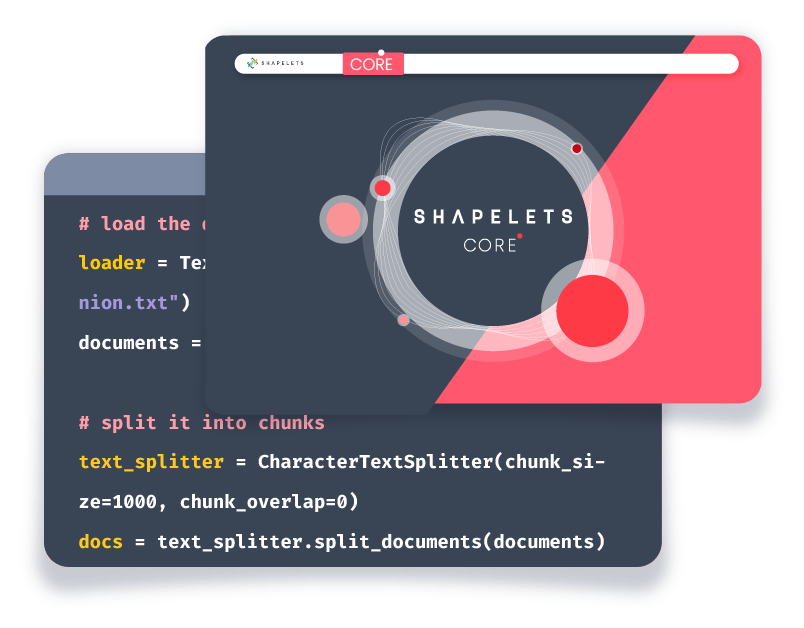Main applications of vector databases
5 minutes

Unlocking the Power of Vector Databases
Vector databases are a type of databases that store and process data as vectors, which means as sequences of numbers representing characteristics or attributes of the data. In this article, we will discuss the main applications of vector databases
This type of database has several adventages over other types of databases, such as relational, document or graph databases, especially in the field of data analysis, machine learning and information retrieval.
What are vector databases?
Understanding vector databases and their applications
Vector databases are based on the concept of vector space, which is a mathematical structure that allows operations such as addition, subtraction, scalar product or distance between vectors to be defined. These operations make it possible to measure the similarity or difference between vectors, as well as to perform calculations and transformations on them.
Vectors can represent any type of data, such as text, images, audio, video, etc. To do this, a feature extraction process is used, which consists of converting the data into a series of numbers that capture its essence or meaning.
Uses in data analysis and machine learning
Vector databases have multiple applications in the field of data analysis, machine learning and information retrieval. Some of the most prominent are:
Semantic search
Semantic search is a type of search that goes beyond keywords and tries to understand the meaning or intent of the user’s query. It uses a language model that represents words, phrases or documents as vectors, and calculates the similarity between the query and the documents. Thus, the most relevant results can be returned, even if they do not contain exactly the same words as the query.
An example of semantic search is offered by Google with its “voice search” function, which allows the user to ask questions in natural language and get precise answers.
Product recommendation
Product recommendation is a type of system that suggests products to the user that may be of interest to them, based on their profile, purchase history, preferences or needs. This is done by using a machine learning model that represents products and users as vectors, and calculates the similarity or affinity between them.Thus, the user can be offered products that match their tastes, that are complementary to those they have already purchased, or that are popular among other similar users.
An example of product recommendation is offered by Amazon with its “customers who bought this product also bought” function.
Anomaly detection
Anomaly detection is a type of analysis that involves identifying data that deviates from what is normal or expected, and which may indicate a problem, error, fraud or threat. This is done by using a machine learning model that represents the data as vectors and calculates the distance or difference between them.Data that are too far away from the mean, median, interquartile range, or any other statistical criterion can be detected.
An example of anomaly detection is offered by Microsoft with its “Azure Anomaly Detector” service, which allows the detection of anomalies in time series, such as web traffic, energy consumption, sales, etc.
What advantages do vector databases have over other types of databases?
Simple Moving Average
Vector databases have several advantages over other types of databases, such as relational, document or graph databases, especially in the field of data analysis, machine learning and information retrieval. Some of the most important are:
Flexibility
Vector databases are able to store and process any type of data, regardless of its structure, format or origin. Moreover, they do not require the definition of a fixed schema or a previous ontology, which facilitates the integration and updating of data. Thus, it can be adapted to the needs and changes of the business, without losing information or generating inconsistencies.
Scalability
Vector databases are capable of handling large volumes of data, without losing performance or quality. In addition, they can be easily distributed and parallelised, which makes it possible to take advantage of available computational resources. Thus, the challenges of big data can be met without compromising speed and accuracy.
Efficiency
Vector databases are able to perform complex operations on data, such as similarity, distance, scalar product, transformation, etc., quickly and efficiently. Furthermore, queries can be optimised and customised, using techniques such as filtering, sorting, aggregation, dimensionality reduction, etc. Thus, relevant and useful results can be obtained, without consuming too many resources and time.
Conclusion
Enhanced Data Processing with Shapelets Core and Bitmap Indexing for Advanced Applications
Vector databases are a type of databases that store and process data as vectors, i.e. as sequences of numbers that represent characteristics or attributes of the data. This type of database has several advantages over other types of databases, such as relational, document or graph databases, especially in the field of data analysis, machine learning and information retrieval. Some of the most prominent applications of vector databases are semantic search, product recommendation and anomaly detection.
Shapelets Core, is a proprietary vector database developed by Shapelets, which offers unprecedented indexing and query execution speeds relying precisely on the implementation of lightweight but powerful bitmap indices.
The ability to reduce dimensionality, improve the efficiency in spatial queries and optimize the data recovery speed makes bitmap indexing a valuable technique in the toolbox of vector database optimization techniques. While the demand for efficient processing of multidimensional data continues to grow, the role of bitmap indexing in vector databases becomes increasingly relevant.

Revolutionizing Vector Database Optimization
Just think about the amount of hours you and your team can save.
Want to apply Shapelets to your projects? Contact us and let’s study your case.

